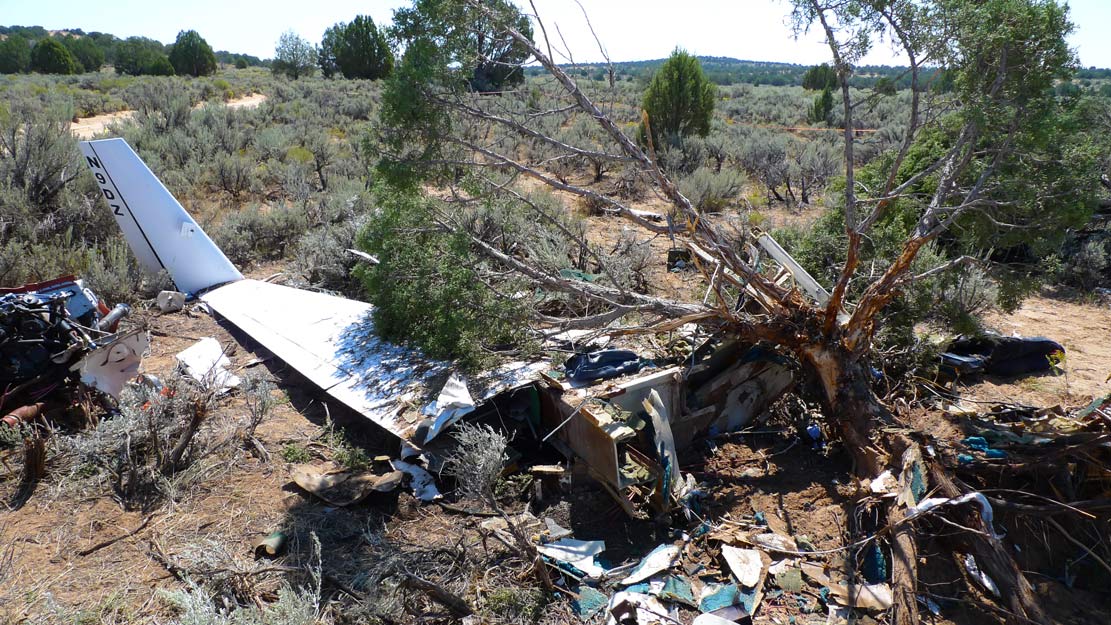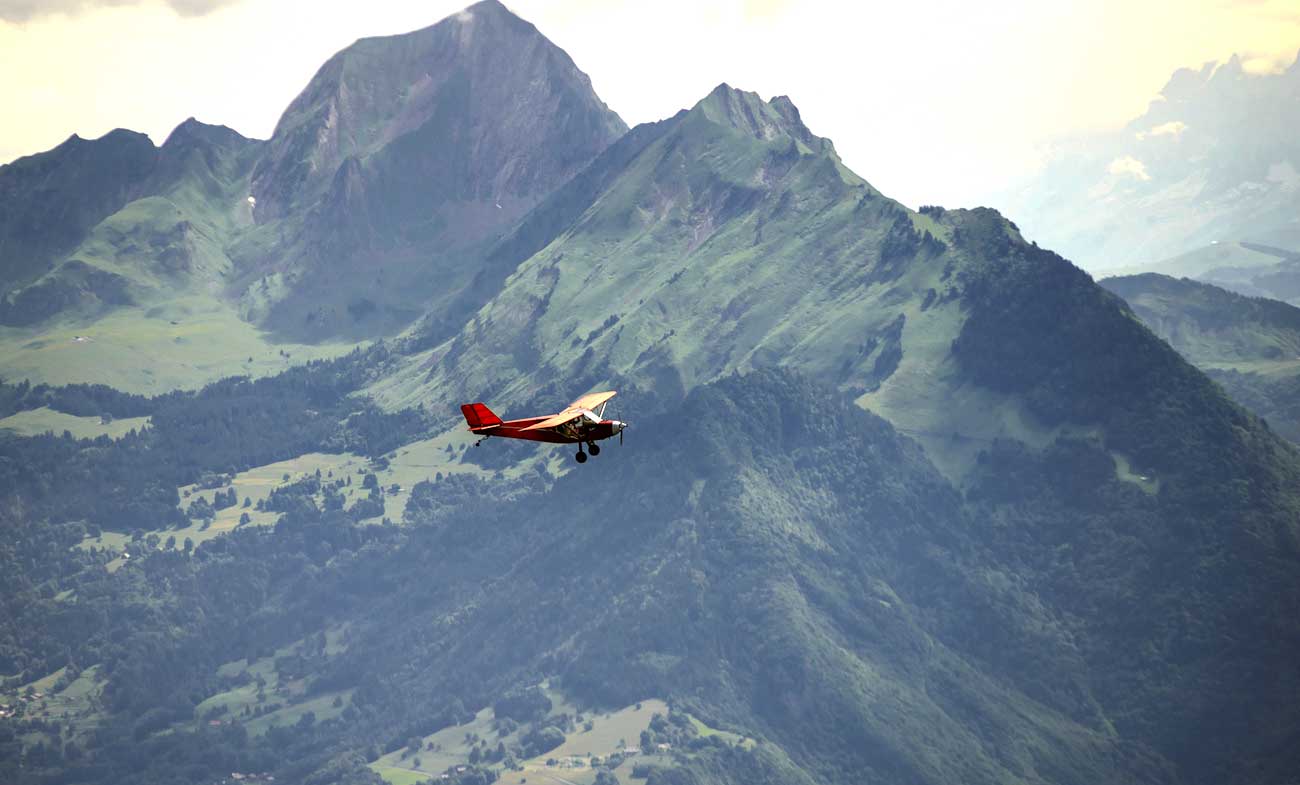How to Build a Fire to Survive in the Wilderness Unprepared
Flying over the most majestic landscapes the Earth has to offer is one of the many joys of being a pilot; observing breathtaking mountains and endless deserts from above while remaining in the safety of one’s cockpit. But, if the worst were to happen and your plane went down, would you be prepared?
Because less than half of all small airplane crashes are fatal, it is likely that you and any companions will be stuck in the backcountry until rescue arrives. Even with an ELT (Emergency Locator Transmitter) directing help to your location, weather conditions and other variables may make it impossible for rescue to reach you for days, or longer. If for example, you crashed in the mountains or the desert, the frigid night temperatures could induce hypothermia despite the lack of snow or ice. Though it may be comfortable (or even too hot) during the day, temperatures in the desert can drop to below 0 degree F after nightfall, and in the mountains the night often brings with it gusts of icy winds and frost, dropping the temperature even further.
To survive such a situation, you need to keep your body warm. The average human will perish after their core temperature drops to 70 degrees F, and if you’ve crashed in the wilderness unprepared, do you know how to start a fire? To prepare every pilot for the worst, this article hopes to provide an easy and memorable guide to starting and maintaining a fire without adequate tools in the wilderness.
Building a Fire
Before starting your fire, ensure you have found a safe location to wait for help, preferably blocked by wind and precipitation. Clear a 3’ fire circle by scraping leaves, pine needles, tumbleweeds and what have you off to the side, clearing the circle of anything remotely flammable. Once this is completed, you must next ensure that your fire has access to oxygen by placing securing it on a platform.
A platform can be constructed out of any dry materials you have access to, including tree bark, rocks, etc., but for safety’s sake, please make sure any rocks you use are nonporous and not waterlogged. Heating waterlogged rocks can result in explosions, causing scraps of rock to shoot out as projectiles, potentially making your situation even more desperate while you try to survive nursing a punctured eye or other projectile wound.
In high elevation where deep snow is present, it becomes necessary to construct a snow platform. This type of platform is used to keep the heat of the flames far enough away from the snow as to avoid water-vapor smothering the flame. To build a snow platform, gather small green logs (around 3” diameter) and break them into meter long sections. Taking two of the log sections, place them parallel to each other 3’ apart, and add more logs, perpendicular to the first layer, on top of the other logs to form a solid 3’x3’ elevated square.
Next, find a 6’ long piece of wood or a rock 2” or 3” tall and prop it against the platform you’ve constructed. Place the kindling leaning against the brace, over the tinder, to allow the spark access to plenty of oxygen to turn your flame into a roaring fire.
Preparing the Kindling
Though it is recommended that everyone bring a fire-starter or some sort of reliable tinder with them when venturing into (or above!) the wilderness, everyone is human and everyone makes mistakes, and so I will only be focusing on creating fire with naturally occurring, non-man made tinder and kindling.
For natural materials to be able to alight with ease, it must be completely dry, and preferably have some way for oxygen to circulate within it, either by being porous or by having a hole or crack of some kind. Unfortunately, nature does not regulate its precipitation in accordance with pilot’s whims, and so it may be difficult or impossible to find dry tinder. In that case, bark may be prepared for use as tinder by twisting the bark until it splinters into a mass of fibers. Imagine the twisting motion used to give your younger brother or sister an “Indian Burn” as children, and replicate that motion with more force on a piece of bark until it becomes light and airy enough to catch fire easily.
If for some reason you are unable to find bark, a stripped branch, log, or root can work just as well. First, ensure it is dry, then scrape a knife or sharp rock down the length or the wood repeatedly, shaving off small, thin layers of kindling with each stroke.
For those aerial adventurers who’ve crashed in the desert, creating a fire is much easier. For tinder and kindling, sagebrush, desert grasses, and dead cacti are perfect and abundant.
When you have gathered enough splintered bark, wood shavings, or dry grasses and leaves, form a small birds nest out of the dry fibers, and place any flammable scraps you can find into the center of the nest, be it wood dust from scraping the log, or small pieces of dry lichen.
Making a Spark
Once you have prepared your birds nest and placed into your fire circle and platform, it is time to start the fire. If you have manmade fire sources, such as a lighter, matches, or flint, use them to ignite the birds nest that you’ve propped against the brace. Once a fire is started, grow and maintain it by placing a handful of kindling over the flame at once. As the flames begin to burn through that layer, place another perpendicular layer of kindling over that, and so on, progressing in size until your fire is burning full sized logs and can maintain its blaze with minimal effort.
If you did not happen to have a fire starter with you, or it was lost or damaged in the crash, there are many ways to make a spark with only naturally occurring materials. The first of which is the hand drill method. For those who weren’t raised by survivalists or never earned their fire badge in scouts, the method may seem daunting, but don’t be afraid. The hand drill is composed of only two part: the spindle, and the fireboard.
The Spindle
First, find a smooth, straight stick or reed with a hole down the center to allow oxygen to enter the drill. Bamboo, cattail, or ideally yucca create the best spindles. After you’ve found a spindle under an inch in diameter and a couple feet long, carve the wider end into a rough circle, then plug it with a smaller piece of wood or reed, leaving a couple inches or the plug extending out of the spindle.
The Fireboard
To create a successful fireboard, find a plank of wood or plant material slightly softer than the spindle, a little under 2’ in length, and approximately 2” or 3” wide. Carve a circle slightly smaller than the diameter of the spindle into the fire board, and cut a wedge-shaped notch into the board, into which you should place a small piece of material such as bark or leather. This notch will help to catch the ember created as you use the drill, and allow easier access to it when it is ready to move to the birds nest.
Sitting however is most comfortable for you, rub the spindle between your hands as if you were rubbing them together for warmth. The same concept fuels both techniques: friction=heat. Play with the various ways you can hold the spindle to maximize rotations.
When you find the best technique for you, place the carved end of the spindle into the divot you carved into the fireboard, and rotate it while applying downward pressure. Your hands will naturally shift down the length of the spindle, so while maintaining the motion and contact between the fireboard and the spindle at all times, quickly move your hands back into the starting position. Quickly is the key word here, as any halting of motion will drop the temperature of the spindle drastically, making it harder and harder to start a fire with every degree lost.
When smokes begins to rise from the divot, increase your speed and pressure until you can’t physically maintain the force and motion any longer. Just before tapping out, scoot downwards with the spindle to shift the ember out of the notch to make it easier to transfer to the birds nest.
Light ‘er Up
As a pilot, you may be aware that planes run on fuel, which is a highly flammable substance. If, upon crashing or landing you still have fuel in your wings and/or a functioning battery, you can use your fuel strainer to gather a small amount of fuel and ignite it with the battery. Be careful, this can easily get out of hand, and you don’t want to be the guy who starts the next forest fire. Follow the previous directions about clearing a large fire circle and securing it with rocks or a platform to ensure your safety, and that of the environment. If you have enough fuel to spare, you can ignite a large fire that can be used as a signal as well as a heat source.

Flying in the more remote places can be one of the great joys of aviation. But when operating an aircraft over those areas there is always the increased risk to your survival, as well as the survival of your passengers should an accident occur. I am referring to the added risk of having to survive in the wilderness for an extended period of time.
This is one article in a series that Disciples of Flight is putting out to address different aspects of airplane crash survival in the wild [Click here to read more…]
Blaze It
As soon as your ember is lit, transfer it to the birds nest and follow the steps above under the heading Making a Spark. Congratulations, you have created fire. Next, the wheel.
Resources: //www.livescience.com/34128-limits-human-survival.html















Leave a Reply